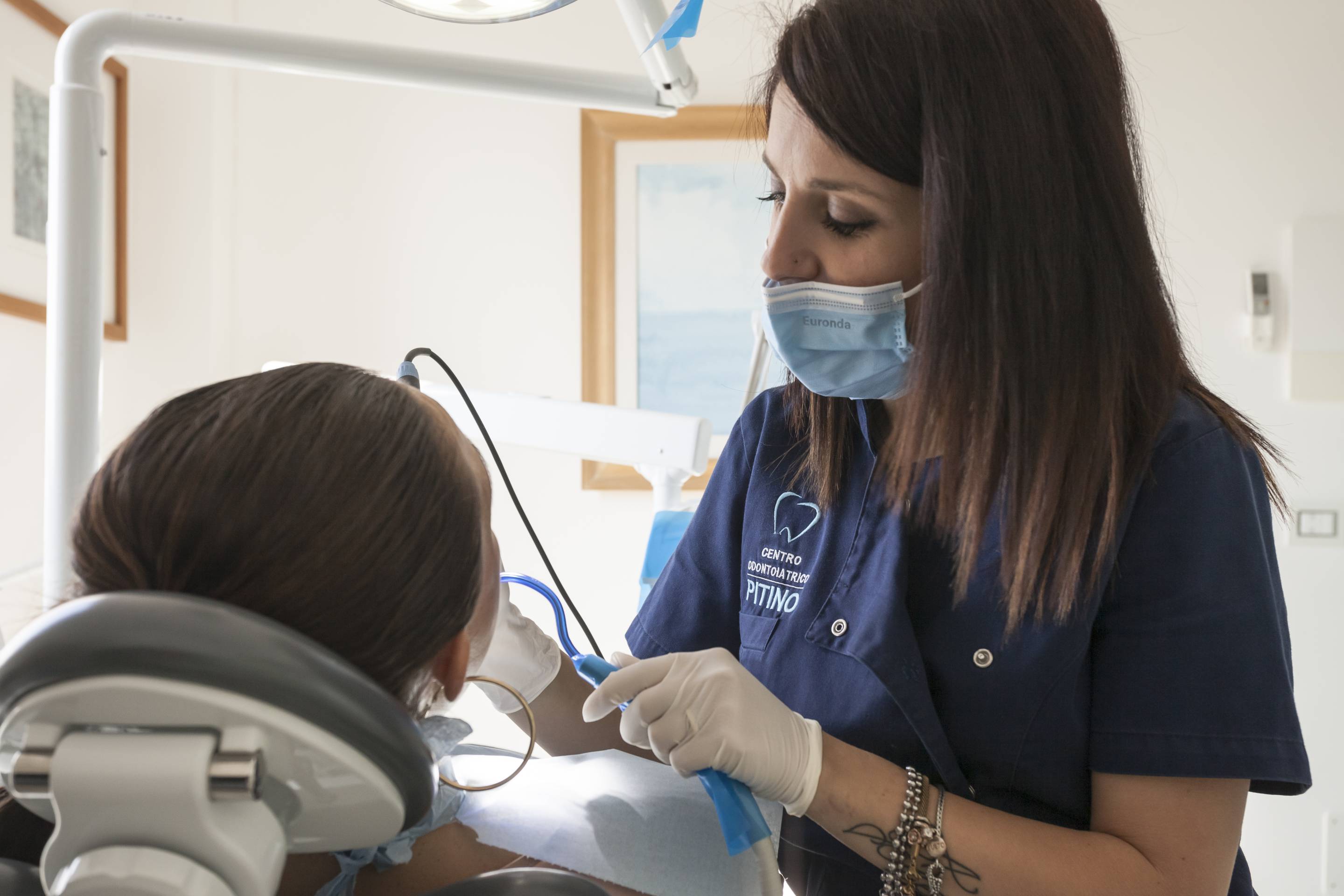The main professional oral hygiene procedures are:
- ablation of tartar: removal of tartar above the gingival rim
- polishing: polishing dental surfaces by using prophylaxis paste
- root planing: removal of subgingival calculus in periodontal pockets level under local anesthesia
- open root planing: similar to the previous one, but for a variation of the gum from the underlying bone surfaces
- ozone therapy: healing process which involves a mixture of oxygen and ozone
The latter one is considered a "natural" therapy because it takes advantage of two elements that are present in nature. Carious lesions subjected to ozone sessionshave shown the possibility of regression in their degenerative process, helping specialists in the field to fully appreciate the caries phenomenon. Ozone therapy helps avoid more invasive procedures and can still save the tooth through the sterilization of the carious tissue, leading to its natural demineralization.
Another treatment adopted by Pitino Dental Centre involves a few cycles that can last from 10 to 60 seconds each. The ozone beam supply goes through a tip directly on the tooth surface without even touching it. Hence, it is a totally painless treatment. At the end of the procedure the patient can leave without any pain or the residual discomfort of anesthesia. The treatment is completed about six weeks after the procedure took place with a second visit to the dentist, who will monitor the conditions of the injury and, if necessary, prepare a new ozone exposure.
The use of ozone is also quite convenient in pediatric dentistry, since halts the progression of caries in the smallest and most restless patients with the greatest of care.
Preventive dentistry includes procedures designed to prevent the development of caries or periodontal diseases. Basic preventive techniques include: sealing of grooves and fluoride prophylaxis.
The first one involves filling potentially sensitive cavities with resinous materials (compomers, composites) at the onset of a carious process.
The second one consists in the application of lotions, pastes, gels with certain concentrations of fluoride through the fluoride ionophoresis technique. Fluoride is in fact a negative ion which hinders bacterial metabolism, especially enamel demineralization, transforming hydroxyapatite (predominant crystalline component of enamel) into fluorapatite, a more resistant component.
Of course, the most effective primary prevention activity is the patient’s personal oral hygiene, which must always be carried out correctly, that is, by using a good toothbrush, a proper brushing technique, dental floss and other hygiene aids, such as oral irrigators and manual brushes.



